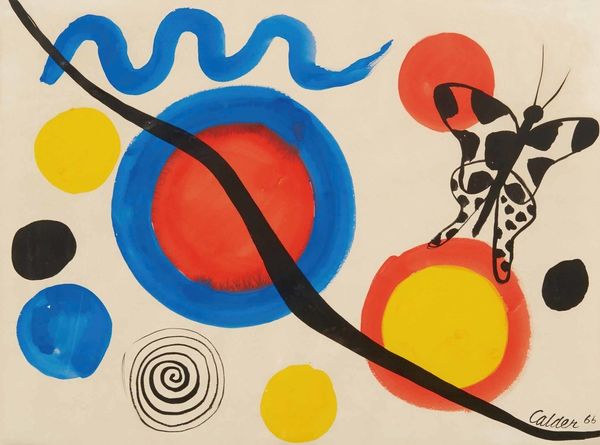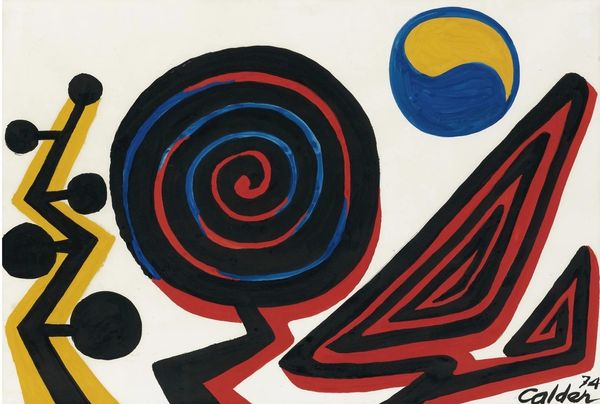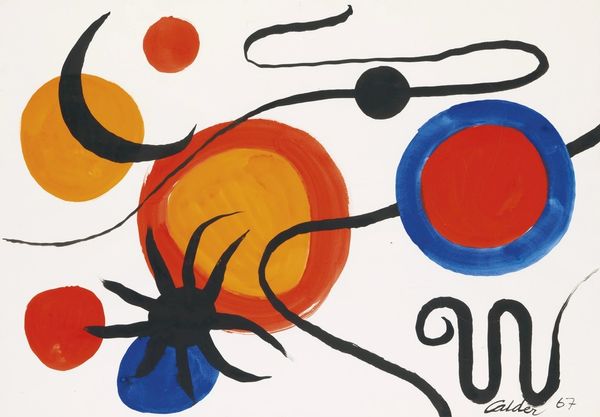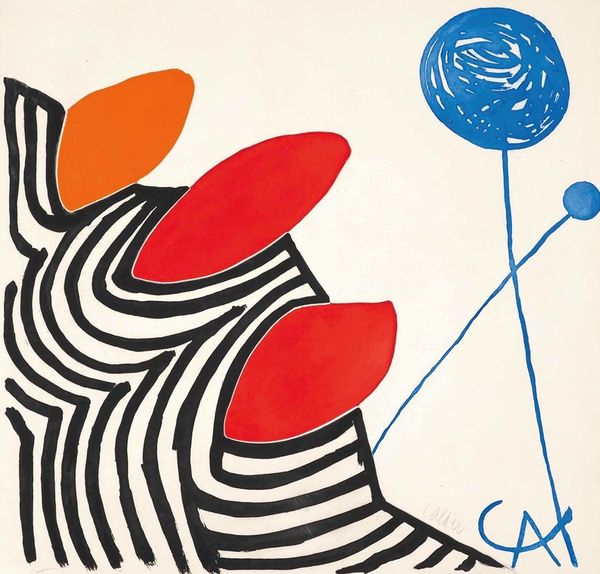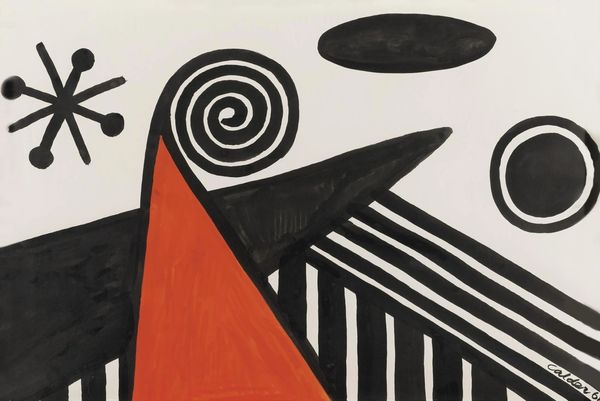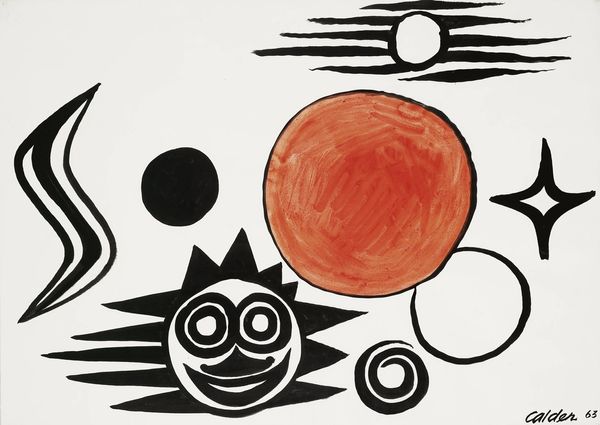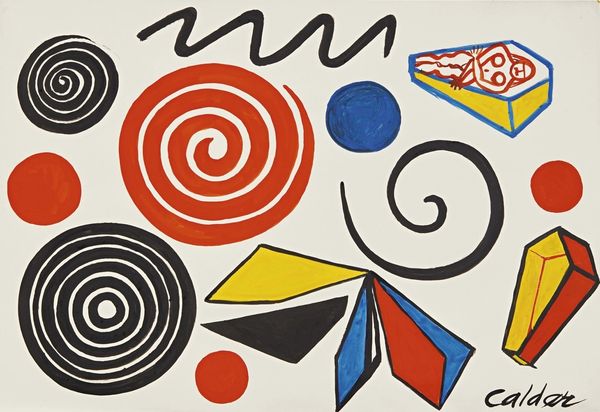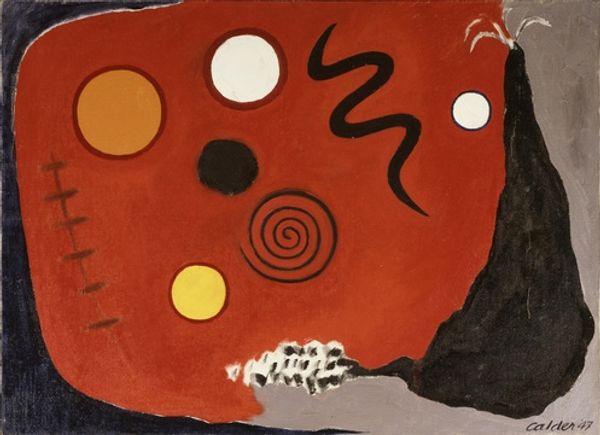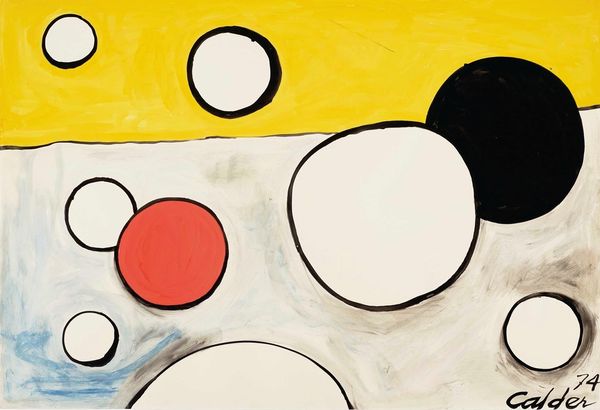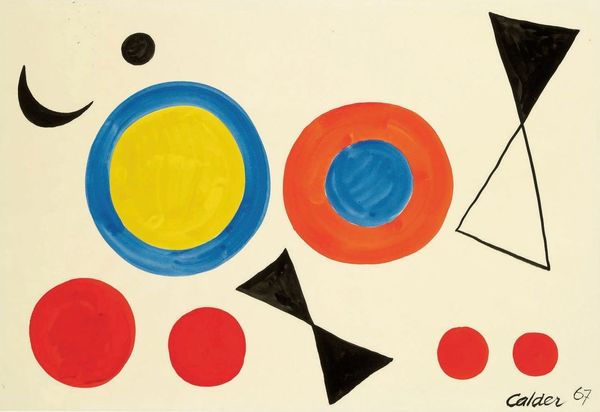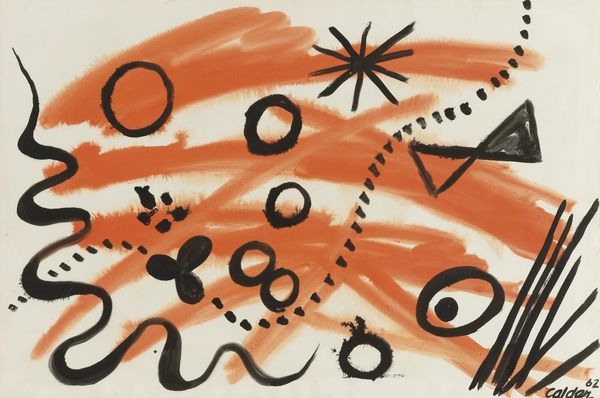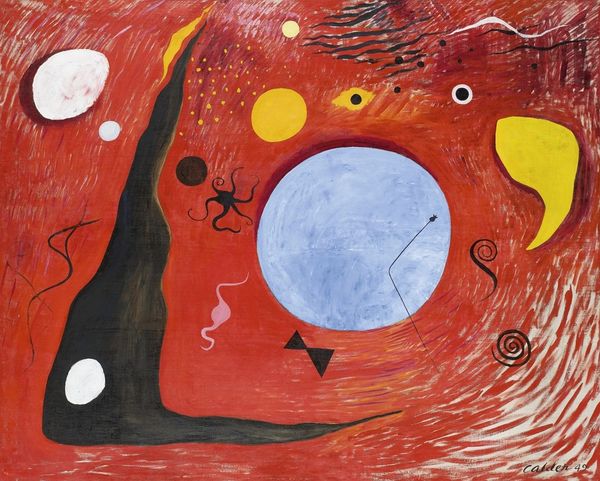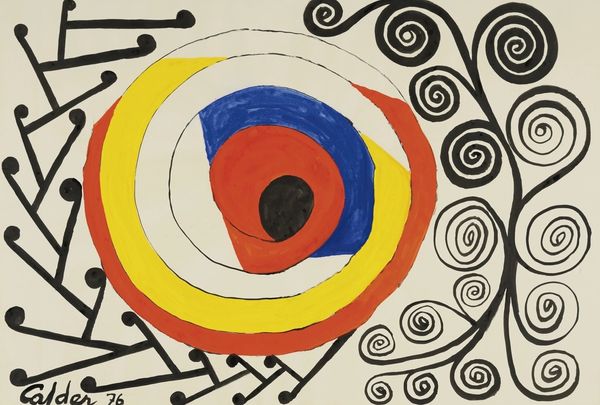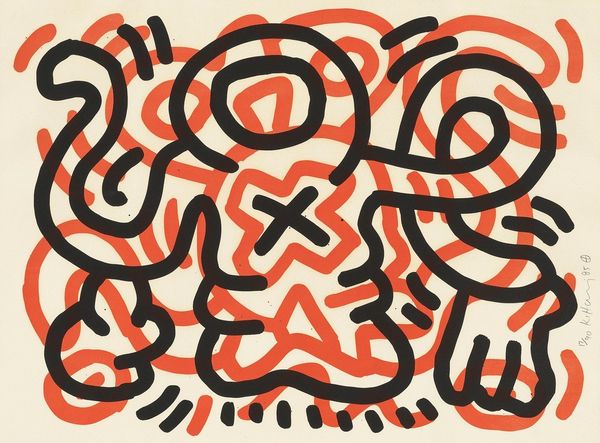
painting, acrylic-paint
#
painting
#
pop art
#
acrylic-paint
#
abstract
#
geometric
#
pop-art
#
line
Copyright: Modern Artists: Artvee
Curator: Standing before us is "Curly Wave," a 1969 acrylic painting by Alexander Calder. Editor: My initial impression is playfulness! The curving forms and bold, primary colors create a dynamic and almost whimsical atmosphere. Curator: Calder, though primarily known for his mobiles, constantly experimented with paintings and graphic work. You see here an elegant dance of shapes. It's difficult not to recognize forms, but one hesitates to immediately name them: is that a cresting wave? Or some sort of fantastic hair arrangement? Perhaps, a tree of life? Editor: I love how it teeters on the edge of representation without ever fully committing. It feels relevant to questions of fluidity and interpretation – reflecting ideas present in art from this period in relation to counterculture challenges to dominant, rigid norms. It is all line and suggestion. And, I also see a link to labor; for instance, consider those parallel wavy lines—they could symbolize the working class's solidarity, perhaps nodding to union banners. Curator: Fascinating; to my eye, those vibrant dots—red, yellow, and blue—resemble celestial bodies suspended in this dynamic composition. It's intriguing how Calder connects these through linear strands, giving a sense of structure to this spontaneous feeling artwork. The line feels so key, not only linking parts together but almost recalling lines from early cartography. These evoke lines of longitude and latitude; the image feels in touch with a broader sense of geography and time. Editor: I see a more assertive message—those connected primary colored points, though buoyant, may address broader issues, especially those affecting disenfranchised peoples. This almost reads like an abstracted visual map that asks us to chart our actions in relation to political or cultural crises. And to stay buoyant! Curator: The stark white background emphasizes the purity of form and color; in a broader view, there are visual harmonies resonating throughout art history. Yet, to keep this in a relevant place and context, Calder used bold primary colours rooted in modernity and movement. The work evokes cultural memory that’s very modern and fresh. Editor: Considering how those bold colours also served to brand pop art as culturally pervasive reminds us how capitalist messaging shaped aesthetic conventions. Still, this "Curly Wave" serves as a reminder that meaning in art shifts alongside societal perceptions, echoing how culture helps shape collective ideas.
Comments
No comments
Be the first to comment and join the conversation on the ultimate creative platform.
